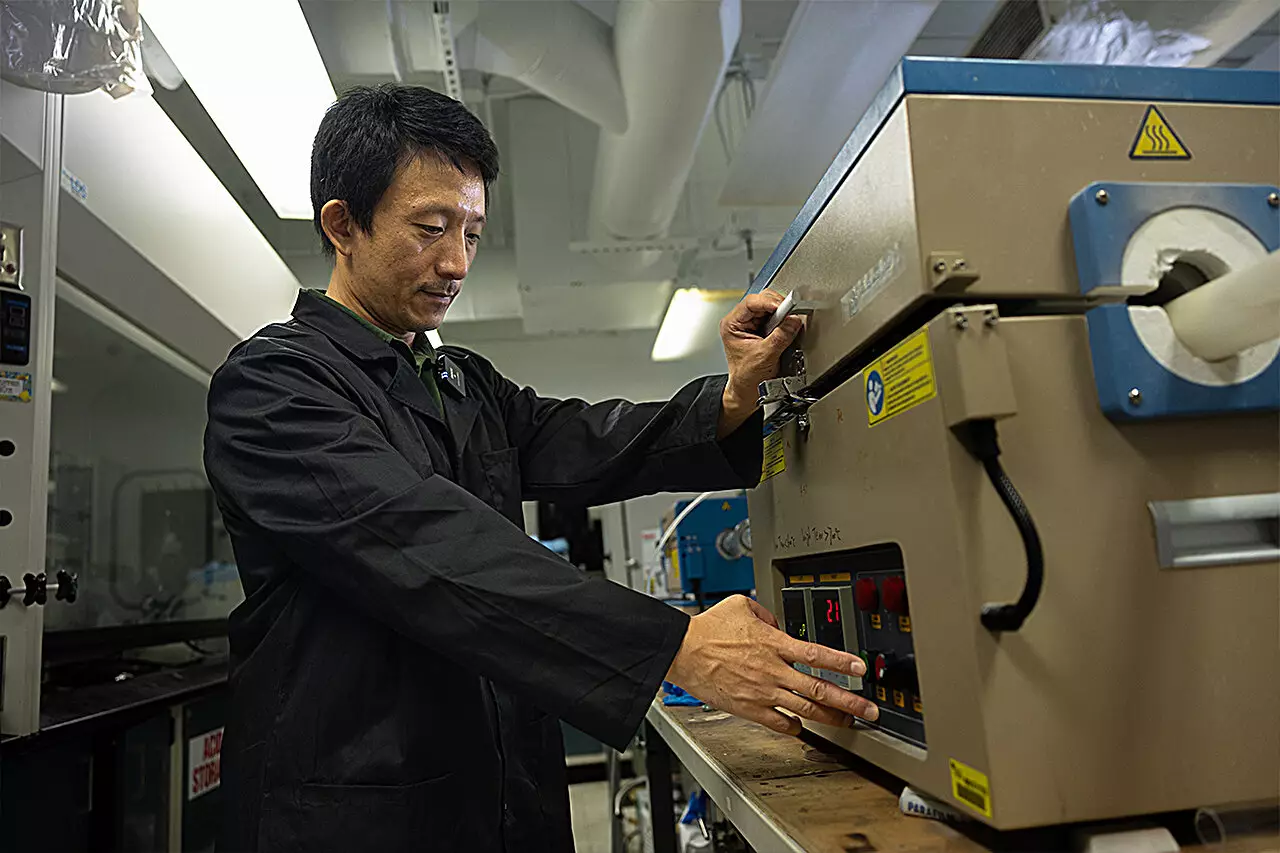As the world grapples with the intensifying challenges posed by climate change, innovative solutions aimed at reducing carbon dioxide emissions have become paramount. Among the latest advancements is a groundbreaking technology developed by Yang Yang, an associate professor at the University of Central Florida (UCF). This technology not only captures carbon dioxide but also converts it into valuable fuels and chemicals, illustrating a promising approach to mitigating environmental impacts while generating useful resources.
Yang’s research, which recently appeared in the Journal of the American Chemical Society, unveils a sophisticated device that employs a unique microsurface made of a tin oxide film layered with fluorine. This remarkable combination allows for the efficient capture of gaseous carbon dioxide through a process involving a bubbling electrode. What sets this technology apart is its ability to selectively convert captured carbon dioxide into carbon monoxide and formic acid—two critical components for various chemical manufacturing processes.
Central to Yang’s innovation is the concept of biomimicry, where natural processes inform technological advancements. Drawing inspiration from the lotus plant, which is renowned for its hydrophobic properties that enable water to glide off its surface, Yang designed a device that optimizes carbon dioxide capture while minimizing unintended water interference. This mimicry is essential because excessive water can inhibit the conversion process, leading to inefficient energy use.
The lotus’s ability to thrive in challenging environments serves as a metaphorical blueprint for Yang’s device, emphasizing the potential benefits of learning from nature to achieve sustainable outcomes. “We in the scientific community strive to emulate the efficiency found in natural systems,” Yang noted, emphasizing the importance of looking at biological processes to enhance technological advancements.
Once carbon dioxide is captured, it is funneled through an electrode, allowing for a customizable conversion process. Unlike the slow, passive nature of photosynthesis, Yang’s electrocatalytic reduction process can efficiently transform carbon dioxide into a variety of chemicals—molecules like methanol, methane, ethylene, and ethanol can all be generated depending on the chosen reaction pathways and catalysts used.
Yang’s aim is straightforward: to create materials capable of rapidly interacting with carbon dioxide and converting it into usable chemicals. This approach promises not only to lower atmospheric carbon dioxide levels but also to help transition to a circular economy by turning what is typically viewed as a waste product into valuable resources.
In the course of his research, Yang identified that one of the significant hurdles in optimizing the electrochemical conversion of carbon dioxide lies in managing the presence of water on the surface of the catalytic materials. Too much water can lead to the unwanted production of hydrogen, significantly reducing the energy efficiency of the process. To combat this issue, Yang’s innovative materials are designed to repel water, thereby enhancing carbon dioxide reduction efficiency and ensuring that nearly all electricity utilized in the reaction serves a productive purpose.
This careful manipulation of water dynamics underscores the complexity of Yang’s work and highlights the nuanced understanding required to create efficient carbon capture technologies. The research is not just focused on carbon reduction but revolves around maximizing output while minimizing waste.
Globally, there are numerous initiatives ranging from afforestation efforts to large-scale carbon capture technologies. Yang’s device has the potential to offer a significant, more efficient alternative to existing methods that can often be time-consuming and costly. Importantly, the technology could integrate seamlessly with renewable energy sources, effectively utilizing intermittent electricity generated from solar panels and wind farms to drive the conversion process.
Having built on his previous work in fuel cell technologies, Yang’s current research represents a fundamental step toward realizing large-scale carbon capture capabilities. Indeed, Yang envisions expanding this work into bigger prototypes capable of significantly reducing carbon dioxide concentrations in real-world settings, which could demonstrate rapid conversion and production of useful chemicals on a larger scale.
Yang’s research effort is supported by a diverse team of experts from UCF’s Department of Materials Science and Engineering, as well as collaborations with prestigious institutions like Stanford University and UC Berkeley. This multidisciplinary approach not only enhances the depth of the research but also signifies the collaborative spirit required to tackle global challenges like climate change.
The implications of Yang’s innovation could be transformative. As technologies evolve to meet the pressing demands of sustainability, Yang’s work stands at the intersection of innovation, environmental stewardship, and economic viability, promising a cleaner, more sustainable future for generations to come.


Leave a Reply